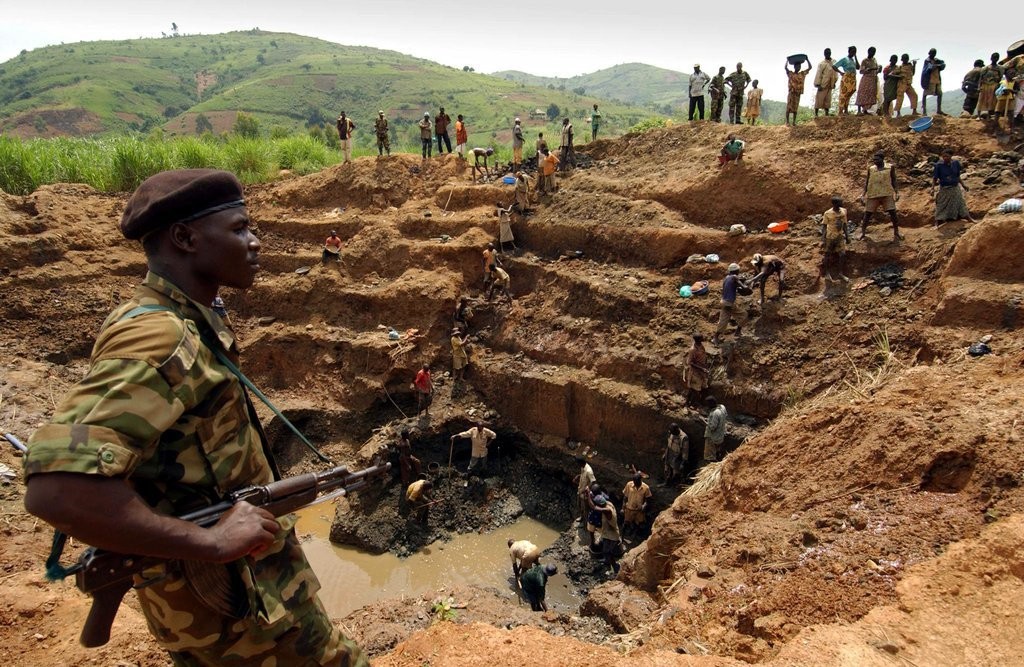A blood diamond (also known as a conflict diamond) refers to a diamond that is mined in war zones and sold to finance armed conflict against governments. The term gained prominence in the late 1990s due to the civil wars in Sierra Leone, Liberia, and other parts of West Africa, where diamonds were used to fund brutal wars, exploitation, and human rights abuses.
Key Characteristics of Blood Diamonds:
Source of Conflict:
Blood diamonds are often mined in regions where armed groups take control of diamond-rich areas and use the sale of diamonds to finance their military campaigns, including the purchase of weapons and equipment.
These diamonds are typically mined under inhumane conditions, with workers, often including children, subjected to forced labour, violence, and abuse.
Impact on Local Communities:
The mining of blood diamonds often involves severe exploitation of workers. They may be forced to work in dangerous conditions without adequate safety measures, receive little or no compensation, and suffer physical violence.
In some cases, communities are displaced from their homes, and the profits from the diamonds are controlled by rebel groups, rather than benefiting local communities or contributing to economic development.
Global Response and the Kimberley Process:
The Kimberley Process Certification Scheme (KPCS), launched in 2003, aims to prevent the trade of blood diamonds by requiring countries to certify that diamonds are sourced from conflict-free areas. The initiative was designed to create a global standard for diamond certification and ensure that diamonds sold on the international market are not financing conflict.
While the Kimberley Process has made progress in reducing the trade in blood diamonds, loopholes and weak enforcement still allow some conflict diamonds to enter the market.
Ethical Concerns:
The sale of blood diamonds raises significant ethical concerns in the jewellery industry. Consumers and advocacy groups have called for more transparency in the diamond supply chain to ensure that diamonds are ethically sourced.
Many jewellers and diamond retailers have pledged to sell only conflict-free diamonds, and some offer guarantees or certificates of origin to confirm that their diamonds were not sourced from conflict zones.
Impact on the Diamond Industry:
The term “blood diamond” has had a lasting impact on the reputation of the diamond industry, highlighting the need for ethical sourcing and responsible business practices.
Public awareness and consumer demand for ethically sourced diamonds have led to the rise of sustainable and conflict-free options, such as lab-grown diamonds and diamonds certified by organisations like the Responsible Jewellery Council.
Alternatives to Blood Diamonds:
Many consumers choose to buy ethically sourced diamonds or lab-grown diamonds as alternatives to blood diamonds. Fairmined and Fairtrade gold are also options for buyers seeking to ensure their jewellery is ethically produced.
Some jewellers also offer diamonds that have been certified as conflict-free through reputable certification schemes such as the Kimberley Process or RJC certification.
Cultural and Legal Implications:
The issue of blood diamonds has drawn attention to the human rights violations that can accompany the extraction of natural resources. The global trade in these diamonds has also led to legal challenges in various countries, with some governments and organisations advocating for stricter regulations and more robust certification systems.
The term “blood diamond” has become synonymous with the broader humanitarian crisis that can occur when natural resources are exploited for profit in conflict regions.
